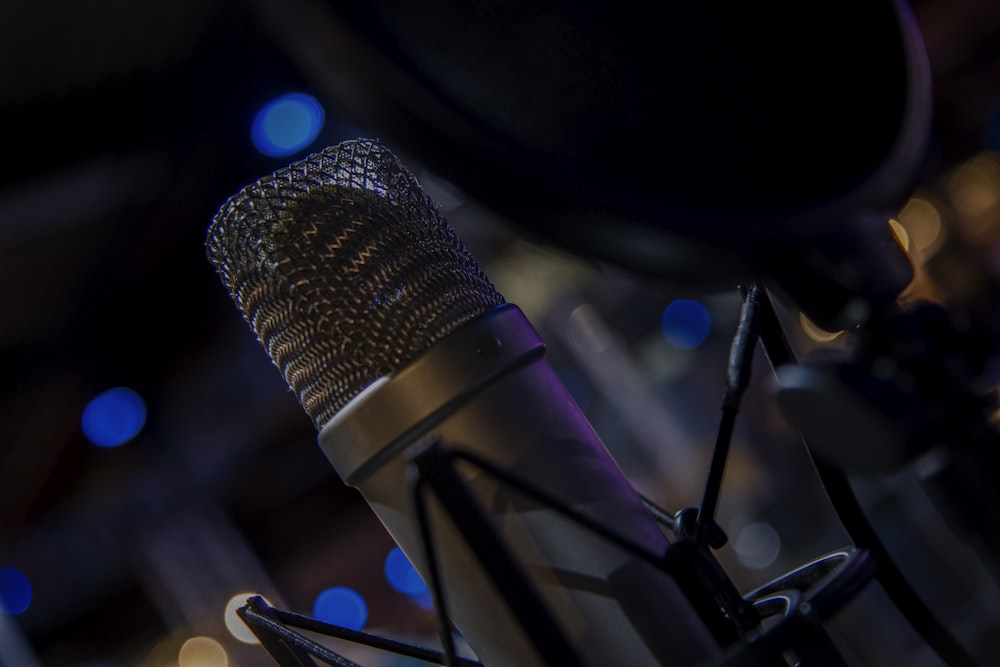The Creator's Guide to Live Streaming Equipment

With the support of the right equipment, creating professional-looking live streams is quite easy. Each streaming setup is different, so it’s important to find the tools that will help you reach your unique streaming goals.
In this post, we are going to discuss the live streaming equipment that creators need for different types of streaming setups.
Live Streaming Equipment Setup: The Basics
Thanks to social media, pretty much anybody can go live with the click of a button. However, if you’re looking for more professional results, you’ll need a live streaming equipment setup that is a bit more involved.
Some of the most important types of streaming equipment include:
Each of these types of equipment comes at different price points and is designed for different use cases.
For example, you can find streaming software that is free, and you can find streaming software that costs thousands of dollars per month. It all depends on the specific features and functionality of each piece of live streaming equipment.
Now that you have a better understanding of what the standard streaming setup looks like and how you can customize it to fit your budget and needs, let’s take a closer look at the roles and options for each type of equipment.
Computer
A computer is an essential part of your streaming setup. Your computer allows you to produce and manage your online streams. With the help of streaming software, it acts as the home base of your stream.
Some streaming setups require the support of a high-power desktop computer, but most creators can get away with a trusty laptop. More complex streaming equipment setups with multiple inputs and more advanced streaming software require more power.
For some streaming setups, a smartphone or tablet will work for managing your stream’s inputs, production, and so forth. However, not all streaming equipment or software is mobile-compatible. Mobile streaming setups have different requirements.
Live Streaming Camera
A camera with streaming capabilities is another must. What you look for in your camera will depend on your budget and streaming needs.
If live streaming is your goal, you need to look for a video camera that offers lives streaming support. Not all video cameras have this functionality, so it is important to make sure that the camera you invest in does.
Beyond the live streaming functionality, it is important to find a camera that is suitable for your intended use case. Here are a few common live streaming camera types:
- Webcam: Suitable for basic streams; can be built into your computer or can be an external tool; price ranges from $20 to $200
- Action camera: Great for live streaming on the go; GoPro is a popular action camera brand; price ranges from $300 to $500
- PTZ camera: Best for 24-hour streams that monitor a location, habitat, or something of the sort; price ranges from $300 to $2500
- Professional camcorder: Suitable for professional streams that require television quality, such as concerts or sporting events; pricing starts at around $1200
With video content creation, it is normal to start simple and invest in better capture equipment as you grow. You can create high-quality streams with any of these options, but as you’d expect, the quality tends to increase as the price increases.
Audio Capture Equipment
When it comes to live streaming, audio quality is often as important as video quality.
Echoing audio, annoying background noises, and other common audio issues are very offputting and can truly put a damper on the viewers' experience. Unfortunately, these issues are often par for the course when you rely on the microphone that is built into your camera.
That’s why we encourage creators to invest in external mics that provide higher-quality results. You can buy a simple lapel mic for under $20 at the very least, or you can invest in a more advanced streaming microphone for $250 to $300.
No matter which approach you take, make sure that the microphone works seamlessly with the rest of the streaming setup so that you get the results you need.
Streaming Software
Although streaming software is intangible, it still falls into the category of live streaming equipment. The most important streaming software is the online video platform.
An online video platform (OVP) is the place where your video content lives on the internet. This tool is key for hosting, managing, delivering, and monetizing your video content. Some online video platforms are geared toward live streaming, and some are made for on-demand video hosting. Others are made for both.
Some popular online video platforms that support live streaming include:
- Maestro
- Brightcove
- Livestream
- Restream
- Sproutvideo
Each of these software options has a variety of plans to serve creators at scales. Maestro, for example, has a variety of pricing plans that are suitable for every type of streamer from professional content creators to larger enterprises.
Some other types of streaming software include switchers, mixers, simulcasting tools, production tools, and chroma keying support. Again, these tools are available at a wide variety of price points, starting at free. Whether or not you’ll need these additional tools depends on what you’re trying to achieve with your streams.
A lot of online video platforms offer free trials, so we encourage you to take advantage of these offers because it will give you a more realistic idea of which solution is best for your unique needs.
Encoders
An encoder is another piece of live streaming equipment that is used to convert the video files that your camera captures into lighter files that are able to be streamed over the internet.
There are both hardware and software encoders, but software encoders are typically sufficient for most creators. Hardware encoders are usually more appropriate for very advanced streaming setups, such as those that require the support of a professional camcorder.
Software encoders range from free to thousands of dollars. Some of the most popular software encoders include:
- Mux
- VidBlasterX
- OBS Studio
- vMix
- Wirecast
Some of these software encoders offer support for additional streaming functionality, so we recommend taking advantage of free trials whenever possible to find out which one makes the most sense for your live streaming equipment setup.
Internet
While it sounds obvious, a strong internet connection is an essential piece of the live streaming puzzle.
Tethered internet is the most reliable option, but WiFi comes in as a close second. When it comes to mobile streaming, a hot spot or bonded internet connection will work.
Either way, it is important that your internet connection is strong enough to sustain your streams. An upload speed of about 10 Mbps is a safe bet, but you can get away with lower speeds if necessary.
Stream on Maestro
Looking for the perfect streaming software to act as the home base of your streaming experience? Look no further. Maestro could be the tool for you.
Maestro is an all-in-one video hosting platform that allows creators to start streaming with just their computer and a webcam. Our platform gives you the flexibility to stream however you like.
You can keep your live streaming equipment setup simple, or you can incorporate all of your favorite streaming tools. The power is in your hands.
Sign up for Maestro to start streaming in no time at all.
Join our Discord server to learn more tips and tricks for streaming on Maestro.


